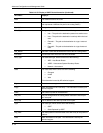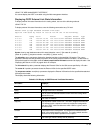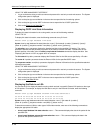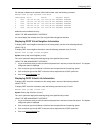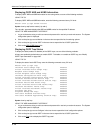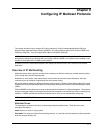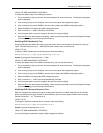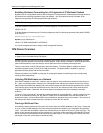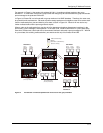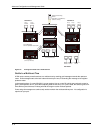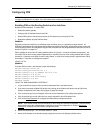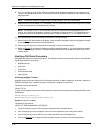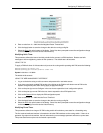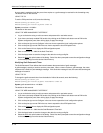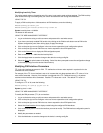
Advanced Configuration and Management Guide
Enabling Hardware Forwarding for all Fragments of IP Multicast Packets
By default, an HP routing switch forwards the first fragment of a fragmented IP multicast packet through hardware,
but forwards the remaining fragments through the software. You can enable the device to forward all the
fragments of fragmented IP multicast packet through hardware.
NOTE: This feature applies only to routing switches, not to switches.
To enable hardware forwarding of all the IP multicast fragments, use the following CLI method.
USING THE CLI
To enable hardware forwarding of all IP multicast fragments, enter the following command at the global CONFIG
level of the CLI:
HP9300(config)# ip multicast-perf
Syntax: [no] ip multicast-perf
USING THE WEB MANAGEMENT INTERFACE
You cannot configure this feature using the Web management interface.
PIM Dense Overview
NOTE: This section describes the “dense” mode of PIM, described in RFC 1075. See “PIM Sparse Overview”
on page 9-12 for information about PIM Sparse.
PIM was introduced to simplify some of the complexity of the routing protocol at the cost of additional overhead
tied with a greater replication of forwarded multicast packets. PIM is similar to DVMRP in that PIM builds source-
routed multicast delivery trees and employs reverse path check when forwarding multicast packets.
There are two modes in which PIM operates: Dense and Sparse. The Dense Mode is suitable for densely
populated multicast groups, primarily in the LAN environment. The Sparse Mode is suitable for sparsely
populated multicast groups with the focus on WAN.
PIM primarily differs from DVMRP by using the IP routing table instead of maintaining its own, thereby being
routing protocol independent.
Initiating PIM Multicasts on a Network
Once PIM is enabled on each router, a network user can begin a video conference multicast from the server on
R1. When a multicast packet is received on a PIM-capable router interface, the interface checks its IP routing
table to determine whether the interface that received the message provides the shortest path back to the source.
If the interface does provide the shortest path back to the source, the multicast packet is then forwarded to all
neighboring PIM routers. Otherwise, the multicast packet is discarded and a prune message is sent back
upstream.
In Figure 9.1, the root node (R1) is forwarding multicast packets for group 229.225.0.1, which it receives from the
server, to its downstream nodes, R2, R3, and R4. Router R4 is an intermediate router with R5 and R6 as its
downstream routers. Because R5 and R6 have no downstream interfaces, they are leaf nodes. The receivers in
this example are those workstations that are resident on routers R2, R3, and R6.
Pruning a Multicast Tree
As multicast packets reach these leaf routers, the routers check their IGMP databases for the group. If the group
is not in a router’s IGMP database, the router discards the packet and sends a prune message to the upstream
router. The router that discarded the packet also maintains the prune state for the source, group (S,G) pair. The
branch is then pruned (removed) from the multicast tree. No further multicast packets for that specific (S,G) pair
will be received from that upstream router until the prune state expires. You can configure the PIM Prune Timer
(the length of time that a prune state is considered valid).
9 - 4



